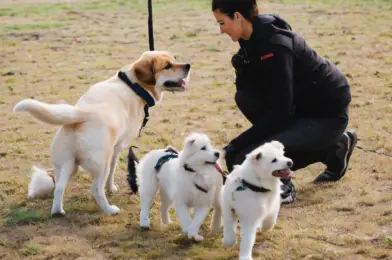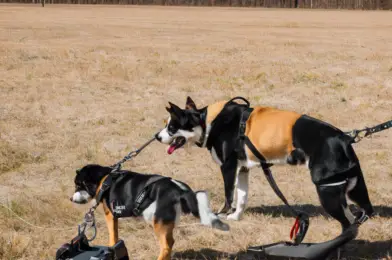Dogs have long been considered man’s best friend, and the relationship we have with our canine companions is a special one. When it comes to training our furry friends, it’s not just the dog’s personality that matters but also the owner’s. Recent studies have revealed an intriguing connection between an owner’s personality traits and the training methods they choose, which can significantly influence the success of their dog’s training. This fascinating interplay highlights how understanding ourselves is just as crucial as understanding our dogs for effective training.
The journey of dog training is a collaborative effort, and the approach we take can vary based on our individual personalities. Researchers have delved into this topic, uncovering some enlightening findings. For instance, people who are more open to new experiences tend to lean towards positive reinforcement techniques, creating a positive and rewarding environment for their pets. This method, often involving treats and praise, has proven to be highly successful in shaping desired behaviors. It’s no surprise that these owners, with their adventurous and innovative mindset, gravitate towards such an engaging and enjoyable training style.
On the other hand, those with a more conscientious nature might opt for a different strategy. These owners are likely to exhibit patience and persistence, making them more inclined to embrace clicker training or obedience classes. This approach focuses on consistency and clear communication, which aligns with their meticulous and disciplined personalities.
Interestingly, the choice of training method doesn’t just depend on personal preferences; it also impacts the outcome of the training. Dog owners who are less agreeable, for example, may experience challenges in training their dogs. This is not to say that they can’t be successful trainers, but their results might be less favorable compared to those who possess more agreeable personalities. This insight suggests that being aware of our personality traits can be a powerful tool in choosing the most effective training method for our four-legged friends.
The impact of an owner’s personality on dog training extends beyond method selection. It also influences how owners interact with their dogs during training sessions. More extroverted individuals may find themselves more actively engaged, making the training process a lively and interactive experience. In contrast, those who are introverted might approach training with a quieter and more introspective style, emphasizing a calm and patient demeanor.
So, what does this mean for dog owners? It’s a reminder that there isn’t a one-size-fits-all approach to training. Recognizing and embracing our unique personalities can guide us in selecting training methods that suit both our dogs and ourselves. This not only makes the training process more enjoyable but also improves the chances of achieving the desired results. By understanding our own strengths and tendencies, we can tailor training to be more effective and enjoyable for both human and canine participants.
Moreover, this awareness can foster a deeper understanding of our dogs. Knowing that our personalities play a role in their learning process encourages us to be more observant of their responses and preferences. It encourages a more personalized approach to training, treating our dogs as individuals rather than applying a generic training template.
In conclusion, the success of dog training is not solely dependent on the dog’s breed or intelligence. It’s a unique dance between the owner’s personality and the chosen training method. Embracing this connection can lead to a more harmonious and productive training experience. As dog owners, we can benefit from self-awareness, allowing us to make informed decisions and create a positive learning environment for our beloved pets. So, the next time you embark on training, consider not just your dog’s needs but also the role your personality plays in shaping their behavior. It might just be the secret ingredient to a well-trained and happy dog!
For those interested in learning more about the science behind this topic, numerous studies and articles provide valuable insights. The Washington Post and BuzzFeed News often feature such content, offering a wealth of information for curious readers. Stay tuned to these platforms for more intriguing stories that bridge the world of science and our everyday lives.










